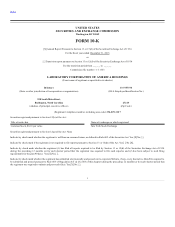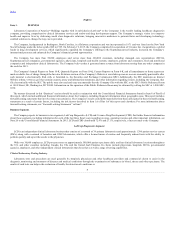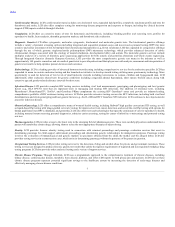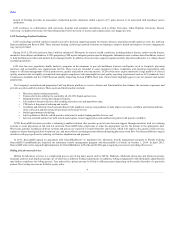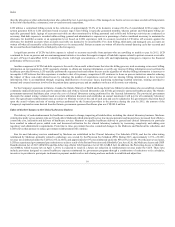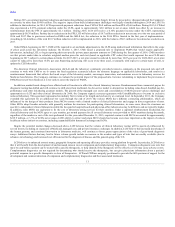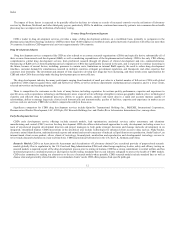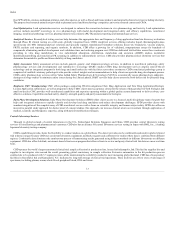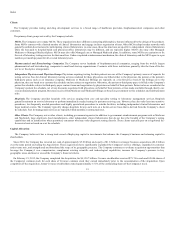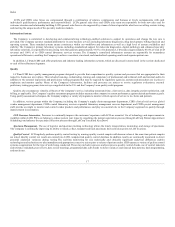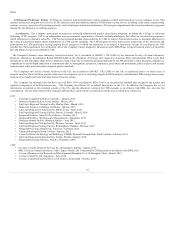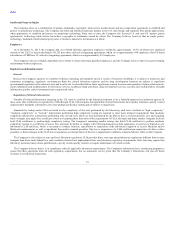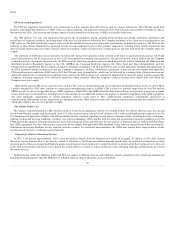LabCorp 2015 Annual Report Download - page 11
Download and view the complete annual report
Please find page 11 of the 2015 LabCorp annual report below. You can navigate through the pages in the report by either clicking on the pages listed below, or by using the keyword search tool below to find specific information within the annual report.
Index
During 2013, government payment reductions and molecular pathology payment issues (largely driven by payer policy changes) reduced the Company’s
net revenue by more than $100.0 million. The negative impact from these reimbursement challenges was largely sustained throughout 2014 and 2015. In
addition to that reduction, in 2014, LCD experienced payments reductions from CLFS of $6.0 million and from PFS of $6.6 million. During 2015, LCD had
also experienced a 0.25% payment reduction under the CLFS, equal to approximately $2.0 million in net revenue, which was offset by an increase in
reimbursement from the PFS of approximately $2.1 million. During 2016, LCD will receive a 0.10% payment increase under the CLFS, representing
approximately $0.76 million. Further, due to reductions in the PFS, LCD will also realize a $10.7 million reduction in net revenue over the two year period of
2016 and 2017. Due to provisions outlined in PAMA and the ABLE Act, the reduction in the 2016 PFS is limited in the first year of implementation.
Accordingly, $2.4 million of the total $10.7 million reduction will be implemented in 2016, with the balance of $8.3 million to be realized as a reduction in
2017.
Under PAMA, beginning in 2017, CMS will be required to set and make adjustments to the CLFS using market-based information that reflects the scope
of prices paid across the laboratory industry. On October 1, 2015, CMS issued a proposed rule to implement PAMA that would require applicable
laboratories, including LCD, to begin reporting their test-specific private payer payment amounts to CMS during the first quarter of 2016. CMS intends to
use that private market data to calculate weighted median prices for each test (based on applicable CPT codes) that would represent the new CLFS rates
beginning in 2017, subject to certain phase-in limits. For 2017-2019, a test price cannot be reduced by more than 10.0% per year; for 2020-2022, a test price
cannot be reduced by more than 15.0% per year. Reporting and pricing will occur every three years, or annually with respect to certain types of tests, to
update the CLFS thereafter.
The American Clinical Laboratory Association (ACLA) and the laboratory community provided extensive comments on the proposed rule and will
continue to work with CMS to try to ensure the final regulation accurately reflects the statutory language on applicable laboratories, and results in a
reimbursement framework that reflects the broad scope of the laboratory market, encourages innovation, and maintains access to laboratory services for
Medicare beneficiaries. The Company continues to evaluate the potential impact of the proposed rule, but since rulemaking to implement the provisions of
PAMA has not yet been finalized, it is too early to assess the impact of PAMA.
In addition, market-based changes have affected and will continue to affect the clinical laboratory business. Reimbursement from commercial payors for
diagnostic testing has shifted and will continue to shift away from traditional, fee-for-service model to alternatives including value-based, bundled pay-for-
performance and other risk-sharing payment models.. The growth of the managed care sector and consolidation of MCOs present various challenges and
opportunities to LCD and other clinical laboratories. In 2006, the Company signed a ten-year agreement with UnitedHealthcare to become its exclusive
national laboratory. This agreement represented an industry first in terms of its length and exclusivity at a national level. In September 2011, the Company
extended this agreement for an additional two years through the end of 2018. The various MCOs have different contracting philosophies, which are
influenced by the design of their products. Some MCOs contract with a limited number of clinical laboratories and engage in direct negotiation of rates.
Other MCOs adopt broader networks with generally uniform fee structures for participating clinical laboratories; in some cases, those fee structures are
specific to independent clinical laboratories while the fees paid to hospital-based and physician-office laboratories may be different, and are typically higher.
In addition, some MCOs use capitation to fix the cost of laboratory testing services for their enrollees. Under a capitated reimbursement mechanism, the
clinical laboratory and the MCO agree to a per member, per month payment for all covered laboratory tests provided to MCO members during the month,
regardless of the number or cost of the tests performed. For the year ended December 31, 2015, capitated contracts with MCOs accounted for approximately
$219.9 million, or 3.5% of LCD's net revenues. LCD's ability to attract and retain MCO clients has become even more important as the impact of various
healthcare reform initiatives continue, including expanded Health Insurance Exchanges and ACOs.
Despite the potential market changes discussed above, LCD believes that the volume of clinical laboratory testing will be positively influenced by
several factors, including an expansion of Medicaid, managed care, and private insurance exchanges. In addition, LCD believe that increased knowledge of
the human genome, and continued innovation in laboratory medicine, will continue to foster greater appreciation of the value of gene-based diagnostic
assays. Additional factors that may lead to future volume growth include an increase in the number and types of tests that are readily available (due to
advances in technology and increased cost efficiencies) for the diagnosis of disease, and the general aging of the U.S.
LCD believes its enhanced esoteric menu, geographic footprint and operating efficiency provide a strong platform for growth. In particular, LCD believes
that it will benefit from the development of and increased interest in new companion and complementary diagnostics. Companion diagnostics are tests that
must be used before a patient can be treated with a specific therapeutic, to help identify if the therapeutic will be effective or if it may cause adverse events.
Complementary diagnostics are not required for determining who should receive the therapeutic, but can give physicians information about a patient’s
potential response to a specific therapeutic or class of therapeutics. LCD and CDD are uniquely positioned to provide the full spectrum of support for the
development and commercialization of companion and complementary diagnostics and their associated treatments.
11

